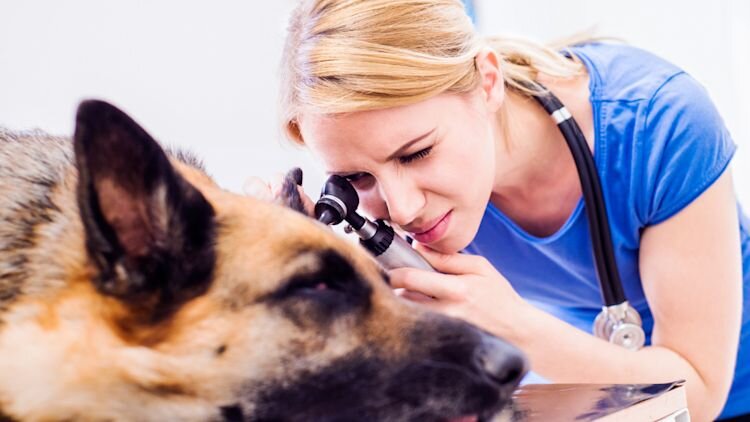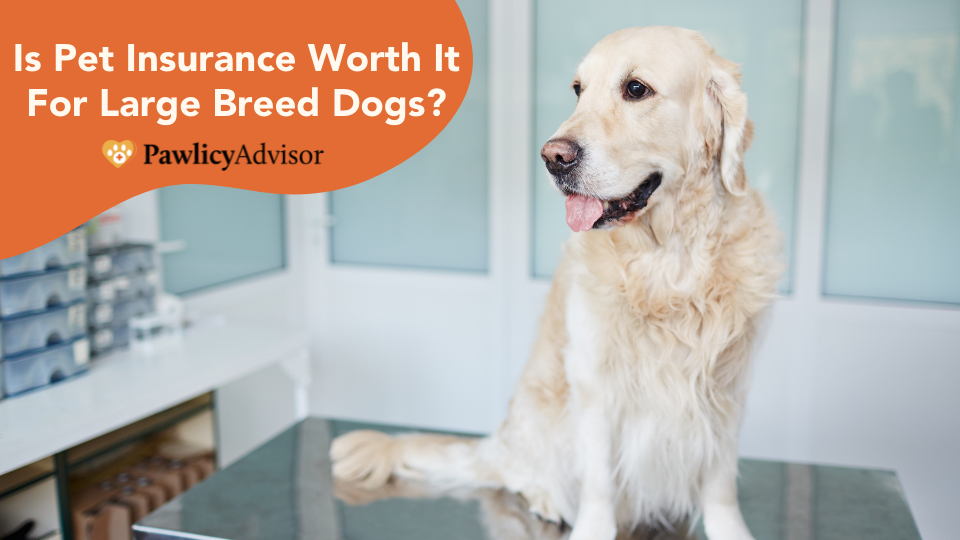Is Pet Insurance Worth It For Large Breed Dogs?
Reviewed by Kari Steere, Licensed Insurance Producer
Contributions by Dr. Ricky Walther
Updated: Feb 27, 2025
We love giant dogs like the Cane Corso, Bernese Mountain Dog, and Great Dane because of their affectionate nature and gentle hearts. But their larger-than-life personalities and impressive physical stature are often accompanied by a fair number of health issues. The extra-large size of these breeds makes them more susceptible to certain conditions you should know about and prepare for in case your pet experiences any throughout their life.
In this post, we’ll discuss several health issues common in big breeds. We’ll also explain how pet insurance for large dogs helps owners save money while providing their oversized pup with the essential care they need to enjoy a great quality of life.
Here are a few questions we’ll answer about the cost of caring for large dogs:
- What is considered a large breed dog?
- How much does it cost to own a large dog?
- Are bone problems more common in large dogs?
- What are common health issues in large dog breeds?
- Hip dysplasia
- Elbow dysplasia
- Bloat
- Hypothyroidism
- Arthritis
- Dilated cardiomyopathy
- Eye issues
- Is pet insurance more expensive for bigger dogs?
- Where to find the best pet insurance for large breed dogs
- Key Takeaways
What is considered a large breed dog?
The definition of a large dog varies, but in general, characteristics include weighing between 50 and 85 pounds with a height of about 24 inches. Giant breeds like Saint Bernard and Newfoundland have a weight range of 75 to 120+ pounds.
How much does it cost to own a large dog?
Generally speaking, the cost of food, medications, dogwalkers, boarding, grooming, and veterinary services are substantially higher for large breed dogs. The reason being, large dogs require more food, stronger doses, additional exercise, bigger space, extra time, and more attention.
These seemingly small surcharges add up fast. The average cost of owning a dog larger than 40 pounds with a lifespan of up to 17 years totals up to $17,800, you can only imagine what the estimate might be for giant breeds that weigh three times more. While a sizeable portion of that money is spent on food, toys, and treats, never to be seen again, the good news is that you can recover a significant amount spent on vet bills.
A pet insurance policy allows you to get reimbursed for 70 to 100% of covered veterinary services (after your deductible is met). Not only can this dramatically reduce the overall cost of pet ownership by creating more breathing space in your dog budget, but it can also save your pet’s life one day if they were to get a serious illness or injury that commonly occur in large dog breeds, but may be too expensive to treat otherwise without financial support from insurance coverage.

Are bone problems more common in large dogs?
Yes, large breed dogs are affected by bone disorders more often than other canines. Examples include hypertrophic osteodystrophy, panosteitis, and osteochondrosis. Many big dogs will develop a bone condition before they turn two years old.
What are common health issues in large dog breeds?
Below are some of the most common dog health issues prevalent in larger canines. Note that out of all large dog breeds, the Siberian Husky is considered to be the healthiest.
Hip dysplasia
Hip dysplasia in dogs is an abnormal hip socket formation that can eventually cause lameness and arthritis. The most significant factor for hip dysplasia is genetics, although other factors like excessive growth rate, improper weight and nutrition, and types of exercise can amplify this genetic predisposition.
Elbow dysplasia
Elbow dysplasia is an abnormal elbow joint development and is the most common cause of forelimb lameness in young and large dogs. It causes pain, swelling, and eventually arthritis.
Bloat
Bloat, also known as Gastric Dilatation-Volvulus (GDV), happens when the dog's stomach fills with gas, fluid, or food and subsequently twists. There are several risk factors for GDV, but large breed dogs with deep and narrow chests, like the German Shepherds and Doberman Pinschers are more prone to the condition that’s often fatal with acute onset.
Hypothyroidism
Hypothyroidism in dogs refers to an underactive thyroid, and is a relatively common endocrine disorder in medium- to large-breed dogs that are usually of middle age. The most common clinical signs include weight gain, skin or coat changes, and lethargy.
Arthritis
Any dog can develop arthritis, but it is more common in large breeds because of their weight and growth patterns. Clinical signs of arthritis include limping, stiffness, difficulty moving, and pain.
Dilated cardiomyopathy
Dilated cardiomyopathy is a disease of the cardiac muscle that results in a decreased ability of the heart to pump blood. Symptoms can include difficulty breathing, coughing, exercise intolerance, weakness, etc.

Eye issues
Large dog breeds are also prone to eye conditions like entropion (a genetic disorder in which the eyelid is inverted inward); ectropion (eyelid abnormality which causes the eyelid to roll outward); and cherry eye (a pink mass protruding from the eyelid).
Is pet insurance more expensive for bigger dogs?
In general, the larger the dog, the more expensive they are to insure. Insurance providers charge higher premiums for larger breeds because these dogs tend to have more issues with their bones, joints, and ligaments due to their weight.
Some larger breeds are also very energetic and, therefore, considered more likely to injure themselves by accident.
Where to find the best pet insurance for large breed dogs
Pawlicy Advisor can help you find the best pet insurance for big dogs at the guaranteed lowest price. When you buy pet insurance, it’s important to research your breed’s genetic issues to select a plan that offers adequate protection — but Pawlicy Advisor does this work on your behalf with personalized plan recommendations specifically tailored to your pet’s needs.
Click on a button below to compare pet insurance plans from top providers, get free customized quotes, or learn more about how it all works from Pawlicy Advisor.
Key Takeaways
- Large breed dogs are susceptible to specific health issues because of their size, such as hip dysplasia, elbow dysplasia, bloat, dilated cardiomyopathy, etc.
- Generally, owning a large dog breed costs more than owning a small dog. Dog insurance is usually more expensive for large dogs like Rottweilers.
- Pawlicy Advisor helps you compare pet insurance companies to see how they stack up so you can find a great plan at the best price.
Do you want to find the best pet insurance?
Let's analyze your pet's breed, age, and location to find the right coverage and the best savings. Ready?
Analyze My PetAbout Pawlicy Advisor
The pet insurance marketplace endorsed by veterinarians, at Pawlicy Advisor we make buying the best pet insurance easier. By comparing personalized coverage and pricing differences we can save you a ton of money, up to 83% in some instances!
Instantly Compare Pet Insurance Plans
Guides
Determine If Pet Insurance Is Worth It
Comparison Charts
Find Your State
Dog Insurance
Pawlicy Advisor is the #1 pet insurance marketplace in the U.S. Recommended by veterinarians. Trusted by 1M+ Americans. Our team of veterinary advisors and licensed insurance experts are dedicated to helping pet parents give their dogs and cats the best possible care.
